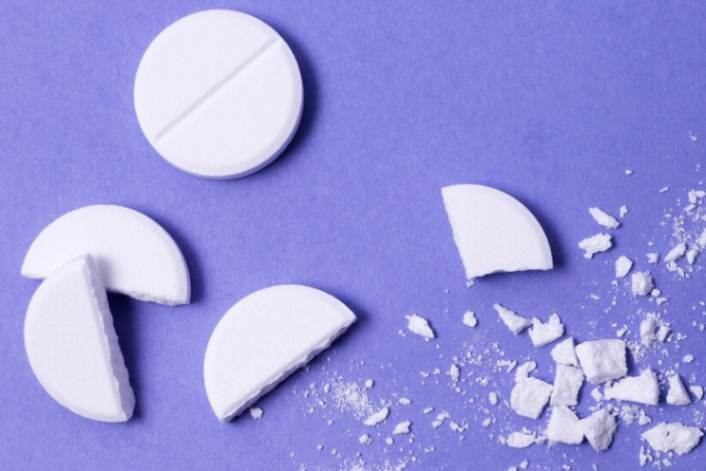The body's core temperature rises significantly from its normal range, which is typically between 97 and 99 degrees Fahrenheit when it battles a virus like COVID-19 (or any other form of infection) to protect itself against pathogens that are sensitive to temperature, such bacteria, and viruses. According to the Centers for Disease Control and Prevention (CDC), you have a fever if your temperature is at least 100.4 degrees Fahrenheit. Pathogens have a harder time increasing in our bodies at higher temperatures. When they have a fever, some people report having more intense or strange dreams or refer to these dreams as "fever dreams." In today's article, we will find the answer to the question "What are fever dreams".
Also Read: Misconceptions Around Coronavirus: Know Myths & Facts
What are fever dreams?
The classic signs of a fever include pains, chills, and sweating. Still, in certain situations, people with fevers may also experience vivid, occasionally upsetting, negatively oriented dreams known as "fever dreams." Certain COVID-19 fever sufferers have reportedly recorded Fever dreams. However, these fever dreams aren't simply limited to COVID-19; they can occur whenever a person's body temperature is elevated. Fever dreams are odd, frequently unfavorable dreams that one can have when their body temperature is higher than normal. Sadly, there is little scientific research on fever dreams, but few studies have been on the subject.
Also Read: Understanding the New Covid-19 Variant, Omicron BF.7 and What India Should Do To Prepare?
What Causes Fever Dreams?
Although the actual cause of these odd dreams that might come along with fevers is still unknown, researchers do have some suggestions. According to one explanation, the brain doesn't process sensations normally when we have a fever. The rapid eye movement (REM) stage of sleep is thought to be when fever dreams are most common. Although temperature is also related to dreaming, most dreams happen in REM sleep. During REM sleep, our ability to control body temperature is less developed than during other sleep phases, and temperature fluctuations might occur. If our temperature rises during REM sleep, we may feel uneasy and experience micro-arousals (changes between deep and light sleep). This makes it more likely that we will remember our dreams.
Also Read: Sleep Paralysis: Causes, Symptoms, and Treatments
What Do One See in Fever Dreams?
We have nightmares known as fever dreams when our body temperature is elevated. These nightmares are horrific, emotionally draining, and have unsettling undertones. Because a fever makes it difficult to fall asleep, sleep interruptions are exacerbated by the unsettling quality of fever nightmares. The following are a few examples of popular themes and images in Fever Dreams:
- Images of the sky on fire or wax statues melting down are connected to heat and fire. This might be because the brain stimulates a high body temperature to ward off germs. The fact that fever dreams are connected to heat may be due to the brain's awareness of this elevated body temperature.
- Repetitive behaviors or occasions.
- A fever dream might occasionally resemble a sci-fi movie, complete with imagery typical of the genre, such as spatial distortions, darkness, enormous insects, and moving monsters with exaggerated arms.
- Unusual dreams that vividly recall every last detail.
- Sometimes from your own life experiences or outside stimuli, intimidating and stressful things are frequently connected with them.
- Sometimes claustrophobia or vertigo follow fever dreams' endings.
Also Read: Why I Cannot Sleep: 15 Possible Causes & Tips
How Are Fever Dreams Different From Other Dreams?
In contrast to normal dreams, fever dreams are frequently more peculiar and vivid. Fever dreams typically feel more depressing than other recent non-fever dreams and contain less happy emotions. The sleeper interacts less with dream characters or entities during fever dreams. Particular features of fever dreams can consist of the following:
- Spatial Distortion: Changing walls, objects evaporating, and spaces altering size were among the most common kinds of dreams in one research of fever dreams.
- Threats or Danger: According to study participants, their fever nightmares featured danger from terrorists, dogs, insects, and stones.
- Illness: Different illnesses may manifest in dreams. In one study, dreaming subjects experienced ailments like respiratory trouble, pain, and vertigo.
Nightmares vs. Fever Dreams
While nightmares can originate from trauma, worry, or anxiety, fever dreams are caused by a fever. These ominous and scary dreams could indicate a sleep problem like narcolepsy or sleep apnea. No matter the source, dreams can reduce the effectiveness of sleep. The probability of nightmares can be decreased by lowering stress and establishing appropriate sleep habits. Cognitive behavioral treatment might be necessary for more difficult situations. A sleep study can also reveal whether a sleep disturbance is present.
Also Read: How Your Sleep Position Affects Your Health
Lucid Dreams vs. Fever Dreams
Due to their high recall values, fever, and lucid dreams share certain characteristics. They typically happen when the brain is most engaged during REM sleep. The distinction is that lucid dreams are not associated with fever. They aren't always negative, and they may occasionally be controlled. But when someone is sick, they virtually always have extremely distressing nightmares. Since lucid dreaming occasionally has some benefits, such as enhancing creativity or eliminating phobias, you can train yourself to experience lucid dreams. Professionally, lucid dreams can occasionally be employed in treatment. Fever dreams, however, lack this benefit. Dreams caused by a fever are more similar to nightmares or emotionally charged dreams with dark undertones.
What is the treatment for fever dreams?
Fever Dreams are not a disease or disorder to be treated but a psychological phenomenon. However, you can think of preventing it. Fever dreams can be prevented if we resolve the fever itself. The more actions you take to control your core body temperature, the more likely you are to have a restful night's sleep, even if you may not be able to pinpoint the exact reason why a fever may generate vivid or upsetting nightmares, and even though there is no foolproof technique to prevent them, fever dreams can be prevented by:
- getting enough sleep
- consuming lots of fluids (water is preferred)
- taking the medications your doctors have prescribed, such as ibuprofen or aspirin
- taking lukewarm showers or sponging exposed skin with tepid water
- making an effort to consume wholesome, readily digested foods.
Also Read: Can Sleep Apnea Kill You?
Does heat produce strange dreams?
Yes. The brain controls our body's temperature, and when we have a fever, our body temperature rises to combat germs. Our brain cannot function normally during a fever because of the excess heat from the high body temperature, which results in unpleasant and strange dreams. Even while there is no guaranteed cure for fever dreams, lowering your body temperature at night can be beneficial. Take a warm bath before bed to make your body chill down, and use cool sheets of cotton, bamboo, or Tencel to sleep on.
Also Read: Sleep Paralysis: Causes, Symptoms, and Treatments
Conclusion
We learned what are fever dreams in this article. Fever dreams are out of your control, and you can do nothing to stop them. The regular functioning of the brain is hampered by high body temperature, which can occasionally result in strange dreams. Consider them a passing sign of a fever your body encounters to ward off infections. Your fever dreams will stop once your body temperature returns to normal.
Frequently Asked Questions
Are Fever Dreams Negative?
Not all fever dreams are harmful to the body. Sleepers are unlikely to act out their dreams since most occur during REM sleep when the muscles in the legs and arms are temporarily paralyzed. However, disturbing or unfavorable dreams might happen to sleepers. They could feel uneasy or uneasy when they awaken.
Are Fever Dreams Meaningful?
Fever dreams don't necessarily imply anything, although they frequently connect to the dreamer's current circumstances. For instance, compared to typical dreams, fever-related dreams more frequently feature a health-related theme and a feeling of temperature.
What symptoms indicate a fever?
Other physical symptoms of a fever include sweating, chills, an inability to control body temperature (too hot or too cold), sore throat, headaches, muscle pains, loss of appetite, and the obvious sign of a temperature exceeding 98.6 degrees Fahrenheit. Although fevers are often brought on by disease, they can also worsen after taking medication or receiving a vaccination.
Do you have more dreams while you are ill?
Sleeping becomes challenging with a fever because of your high body temperature and pains. Negatively tinged emotional nightmares result from disturbed sleep. Although you might not recall your fever dream, you might feel unhappy when you wake up. To avoid further sleep disruption, try to eat easily digested-foods. To combat exhaustion, attempt to get as much sleep as you can.
What are fever dreams caused by?
The exact cause of fever dreams is unknown yet. However, some theories suggest fever dreams are caused by the brain's reaction to fever or high body temperature.
Can you remember fever dreams?
Unlike other dreams, fever dreams are easier to recall because of their vivid, bizarre and unpleasant nature.
Is 99.5 a fever in adults?
A body temperature of 100-100.4 degress celcius is considered a fever in adults.
What is an example of a vivid dream?
The most common examples of vivid dreams are being chased by someone or falling from a height.

Reviewed by







